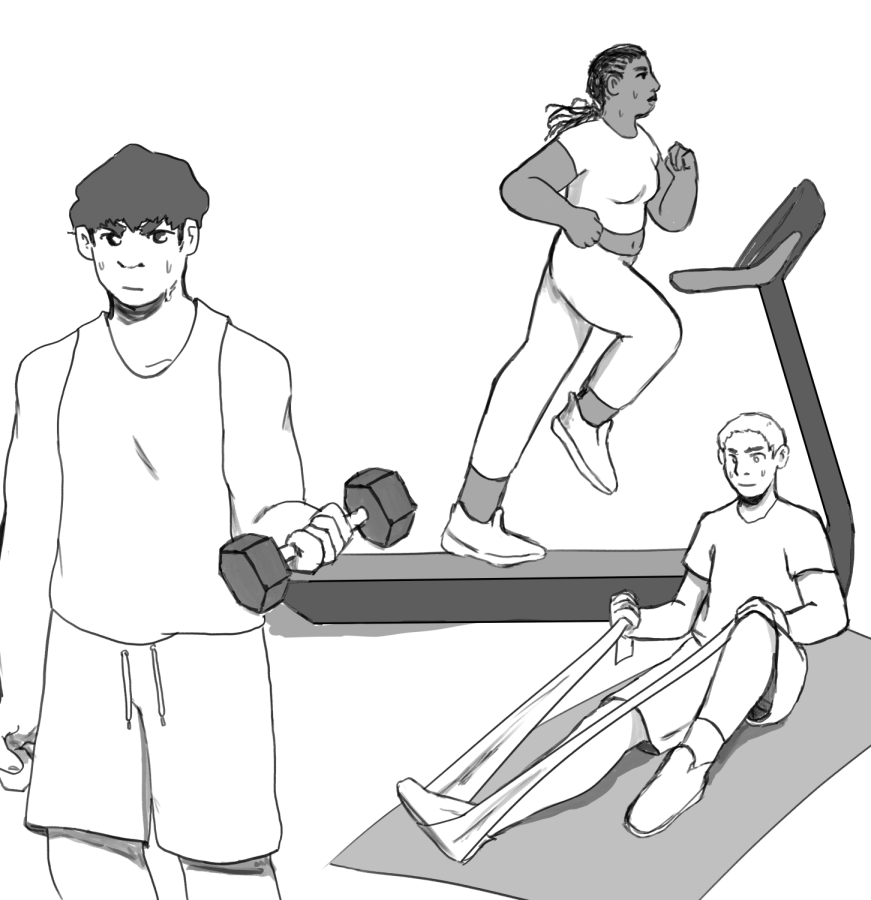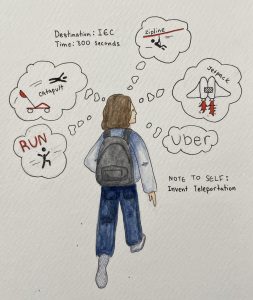A heavy issue: why weight room should be taken more seriously
Gisele Cestaro argues that students should take advantage of the equipment and time in the weight room.
May 9, 2022
When the time comes for students to choose after-school activities for the upcoming sports season, many tend to gravitate towards weight room. With only two days of physical education credit necessary a week and at roughly thirty-five minutes per day, weight room comes off as one of the less strenuous choices in order to fulfill the PE requirements. Though weight room can be productive, I believe one of its downfalls is that students fail to take it seriously.
Like any after-school activity, weight room is not optional, and several unexcused absences will likely result in students facing consequences. However, this has not stopped people from not using their exercise time properly by either not going, or signing their name and then leaving. Our weight room has many options with quality equipment, but some students will tend to take advantage of this time and use it in a nonproductive way, or just not go at all.
I believe a protocol that would benefit the efficiency of weight room would be to have time limits for machines, this way students can alternate in the allotted time. This method would decrease wait time as well as encourage people to use their time in productive ways while waiting for a machine.
When it comes to being in a pleasant environment, gender roles also play a part when it comes to productivity; a co-ed environment has the potential to be unnerving to some, especially those who are just starting fresh.
Sophia Semczuk, a junior who has done weight room for several semesters, maintains that it has the potential to be effective if there were more protocols in place. When observing others, Semczuk has noticed there is not as much participation as there should be, but she anticipates gender roles play a part in that. “The guys tend to take up more space in the weight room which makes it harder for girls to use the equipment at times and workout,” she said.
Semczuk believes this behavior prompts some students to sign in and leave due to people having no restrictions on machine time. “A lot of the time people will sit around and wait for someone to get off a specific machine, which just defeats the purpose of being there because you’re not getting anything done,” she said.
The guidelines of having trainers being constantly present are an efficient way to help students navigate new equipment or to simply ask for advice, which is an important part of having the ability to feel comfortable exercising.
Sebastian Germain, the head coach trainer, believes that students who don’t use their time wisely is a sign they don’t have the experience yet, which is why he affirmed that guidance is important.
“There are some occasions where students like to hang out more, but I don’t believe that’s necessarily based on not wanting to participate. Sometimes they aren’t sure of what to do, and I think that’s where the roles of the instructors come in because there’s a freedom where they can ask questions,” he said.
Although some students don’t fully take their time in the weight room seriously, there are several benefits to exercise. Students can begin to envision long or short term goals for themselves, as well as talk to their trainers who would be willing and able to help them. I maintain many students feel either lost or intimidated when entering the weight room; not knowing where to start can push them away from getting the help they need.
As a solution to this, trainers should send out a google form at the beginning of each trimester that students in weight room can fill out regarding their goals as well as any personal experience they have had in the past. This way, trainers can get to know their students on a better level and work to create a more inclusive environment for those who might not be as familiar with exercise.

















